PRESS RELEASE.
November 30, 2012: Toronto, ON – On November 29th Stornoway Diamonds (Stock Profile – TSX:SWY) CEO and President, Matt Manson gave a presentation to institutional investors at the Scotiabank Mining Conference 2012.
A sound recording has been synced to the slide presentation.
CompanyFeed™

Gold reached $1730 per ounce in early London trading on Friday – the same level seen just before last week’s late jump and subsequent 2.0% sell-off on Wednesday.
Silver touched a new 8-week high just shy of $34.40 per ounce and the broader commodities market ticked lower.
Major-government debt prices were flat and so too were European stock markets.
New data today showed Eurozone unemployment hitting a post-unification record of 11.7% while the German Bundestag voted 473 to 100 to approve the latest €44 billion aid to Greece.
“[Gold demand from] central banks could help the price, specifically South American banks,” says one London trader in a note. “But that’s demand for the long run, and our days are made of shorter-term decisions.”
Latest data from the US Mint showed a strong rise in sales of Gold Coins to retail dealers in late November.
Holdings in exchange-traded trust products (gold ETFs) rose globally to a new record high of 2,619.4 tonnes according to Bloomberg. “[That’s] proof that gold remains in high demand as a store of value and a safe haven despite all the price fluctuations,” says this morning’s note from Commerzbank in Frankfurt.
“My average [gold price] forecast for 2013 is $1920,” says David Jollie at Mitsui, the Japanese trading conglomerate. He was the winner in 2011 of the London Bullion Market Association’s silver forecast.
“We expect investment demand to remain robust in China,” adds the latest monthly report from Standard Bank’s precious metals analysts here in London. “The reasons for the expected rise in gold investment demand in China are broad-based and, we believe, very similar to those in many other countries…substantial monetary stimulus and low or negative real interest rates.”
Speaking today to Reuters, Marcus Grubb, director for investment at the World Gold Council, said “There’s evidence already that the Chinese economy is bottoming out, and beginning to recover again. [Gold will] have strength into Q1 next year on Chinese New Year… I think you’ll see China perform strongly in 2013 as the economy recovers.”
Grubb is forecasting a 10% rise in 2013 gold demand from this year’s likely 800-tonne total.
For MiningFeeds’ comprehensive list of publicly traded gold companies – CLICK HERE.
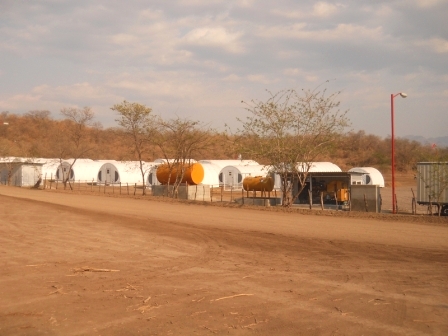
Last week Geologix Explorations announced they are now evaluating a new engineering concept and an alternative processing procedure for their flagship Tepal gold-copper project in Michoacan state, Mexico.
Analysts expected the Tepal project to reach production in 2014. But with the news from last week, further delays and some additional costs are now expected with the long-awaited prefeasibility study (PFS). The company has engaged JDS Energy & Mining, a new lead engineering firm, to complete the study which is now slated for the first quarter of 2013.
Dunham Craig, president and chief executive officer of Geologix (Stock Profile – TSE:GIX & OTC:GIXEF) stated,”In the process of the study, our consulting engineers have recommended review of several areas that offer potential benefit to the project. Although we recognize that delays have caused uncertainty for some investors, the primary purpose of this PFS is to accurately evaluate and understand the potential mine plan and economics in a manner that will permit the company to subsequently advance from PFS to a bankable feasibility stage as efficiently as possible.”
In response to the news, Raymond James analyst Gary Baschuk writes in an updated report today, “We are reducing our target on Geologix to $0.40 (from $1.10) and our rating to Market Perform (from Outperform) based on the lack of successful exploration drill results and expected capital increase associated with potential construction of the Tepal gold/copper project. While the company is advancing on the development front with a [PFS] on Tepal, we believe GIX needs to restart the exploration process with a new acquisition.”
The company maintains other projects in Mexico, Peru and Nevada but for the past few years the focus has been on developing Tepal. Since the announcement, shares of Geologix have been drifting lower and are currently trading at $0.175, a half a penny above its 52 week low.

Eurozone finance ministers agreed early on Tuesday to amend the timetable for reducing Greece’s debt-to-GDP ratio.
Greece is now expected to bring the ratio down to 124% by 2020, up from the previous target of 120%. An additional target of “substantially lower than 110%” has been set for 2022, while by 2016 Greece should aim for an interim target of 175%.
International Monetary Fund chief Christine Lagarde called previously for there to be no movement in the deadline or target, arguing that instead Greece’s debt burden should be reduced by imposing further losses on creditors.
In addition, a Eurogroup statement referred to the possibility of Greece buying back some of its debt currently trading below par value, a measure Germany has advocated.
“If this is the route chosen,” the statement said, “any tender or exchange prices are expected to be no higher than those at the close on Friday 23 November 2012.”
The deal also included a possible reduction of the interest rate Greece pays on bailout loans, as well as a 10 year suspension of such payments, although these measures are subject to how much progress is made on reforms.
“The Eurogroup expects to be in a position to formally decide on the disbursement [of Greece’s next tranche of bailout funding] by 13 December,” the Eurogroup statement said.
On the currency markets the Euro edged lower against the Dollar Tuesday morning, as gold and silver also eased slightly in Dollar terms.
“Gold does not appear to be particularly impressed by last night’s agreement,” says this morning’s commodities note from Commerzbank.
“The budget balance and economic growth targets set in the program are very ambitious, and it is questionable whether they will actually be achieved. If not, the Greek debt problems could return to the spotlight more quickly than anticipated.”
Greece’s economy will shrink by 4.5% next year, following a contraction of 6.3% in 2012, according to the latest Economic Outlook published by the Organisation for Economic Cooperation and Development Tuesday.
“The monetary policy stance should be further eased in many economies,” the OECD report says. “Additional easing is required in the Euro area, Japan and some emerging market economies, including China and India… excessive near-term fiscal consolidation should be avoided.”

Gold fell back below $1750 an ounce, a few Dollars below where they closed last week following Friday’s rally, while stocks and commodities also edged lower and US Treasuries gained ahead of further discussion on Greece at today’s meeting of Euro finance ministers.
Eurozone finance ministers meet today to discuss Greece, following last Tuesday’s meeting that ended without agreement to pay Athens its latest tranche of bailout funding.
Policymakers are yet to agree on how Greece should reduce its debt-to-GDP ratio, with the aim of bringing it down to 120% over the next decade. Some Euro members have suggested reducing the interest rates Greece pays on its loans, while Germany is reported to favor allowing Greece to buy back some of its debt at below face value.
In a closed-door meeting last week German finance minister Wolfgang Schaeuble reportedly told his counterparts from France, Italy and Spain, as well as International Monetary Fund chief Christine Lagarde, that Germany might eventually write off some of its loans to Greece. At the Eurozone finance ministers meeting the next day however Schaeuble ruled this out.
“It turns out that Schaeuble may have exceeded his mandate from the Chancellery, if he had one,” one EU official told Reuters.
On Friday, spot gold rallied in US trading to close above $1750 an ounce for the first time in over a month. One analyst this morning called Friday’s move a “technical breakout” enabled by “illiquid trading conditions” a day after Thursday’s Thanksgiving holiday in the US.
“We’d like to see prices above $1760 to confirm the movement,” adds a note from ANZ. “That would pave the way for a test of $1790-$1800…[but] We think $1800 will prove to be a step too far in the current market, and remain confident in year-end forecast of $1780.”
Elsewhere in Europe, two thirds of the vote went to pro-independence parties in yesterday’s regional elections in Catalonia, with the Catalan Republican Left (ERC) party, one of several parties that have called for a referendum on Catalonia’s independence from Spain, more than doubling its number of seats in the regional assembly in elections held Sunday.
The Convergencia i Unio party of Catalan president Artur Mas won 50 of the 135 seats, down from 62, Bloomberg reports, meaning Mas does not have a majority in the assembly.
“With a majority, Mas could have negotiated [with the national government in Madrid] for all kinds of goodies to postpone the referendum but clearly that’s not an option anymore,” says Ken Dubin, political scientist at Carlos III University in Madrid.
Despite being Spain’s richest region, Catalonia requested a €5 billion bailout from the national government back in August. Mas has called for independent tax collection and has said net transfers from Catalonia to other regions are to blame for its financial difficulties.
Over in India, where a central bank official talked today of the benefits of investing in “dematerialized gold”, bullion importers today opted not to buy new stock for the wedding season, with the Rupee weakening against the Dollar.
Rules restricting banks from buying gold back from customers are “a work in progress”, the Reserve Bank of India’s deputy governor Subir Gokarn told a conference Monday.
Gokarn also elaborated on last week’s announcement that the authorities are looking at creating investment products linked to gold to satisfy demand in a country that is traditionally the world’s biggest god buying nation, and which imports the vast majority of its bullion.
“Since current account deficit is large and capital flows are becoming more uncertain,” Gokarn said, “the role of innovation is to find ways to not deny the ability or choice of investing in gold… can we find ways to give [people] gold like products, what one may call dematerialized gold, with gold like qualities but are not entirely dependent on physical possession.”

Just about everyone in the gold and money management communities, is aware that billionaire George Soros’ hedge fund, Soros Fund Management LLC, is heavily invested in gold and gold mining equities. Additionally, in the past few days, a flurry of new articles have been written, detailing the Soros Fund’s most recent 13-f filing.
In case anyone is unfamiliar, a 13-f filing is a document which contains a fund’s investments held during a financial quarter, and when we compare a recent 13-f with a previous 13-f, we can see the buying and selling activities of a fund during a given time frame.
In the most recent 13-f filing on November 14th, the Soros fund increased its position in gold via the GDL fund from 884,400 shares, to 1.3+ million shares. That represents a sum of about $200 million. The fund increased its position in the GDX gold miners ETF from 1 million shares, to over 2.3 million, it added a 1.7 million share position in Kinross Gold, and finally, maintained a nearly 2.4 million share position in the GDXJ junior gold miners ETF.
But it seems something was left out – the Soros Fund added what appears to be a $9 million call option position on the GDX.
What might that mean?
It might mean the team felt that gold mining equities were extremely undervalued on a short term basis. It might also mean the team sees money to be made over the next 6-12 months, via a sharp move higher in the GDX.
One thing we do not know, is the expiration date and strike price of the options. However, given the size of the fund, and size of the option position, it’s very unlikely that the options are short-term (less than 6 months), and due to necessary volume to fill such a position, they are likely “close to the money” – to use a piece of option jargon.
It’s encouraging to see one of the world’s most successful billionaire investors moving cash into the gold mining equity space, especially during a time in which many a smart market commentator has pounded the table to anyone who will listen, of the value to be had in the sector. There is no doubt great numbers of retail investors who have abandoned the mining equity space this year.
However, we should note many of the retail and institutional investors who abandoned their ships (positions) over the last six months, may have inadvertently been selling their holdings directly to the Soros Fund Management LLC team. In betting who will ultimately be right or wrong from a financial perspective, I’ll be placing my bets on the Soros Fund.

During the annual meeting of the Québec Mineral Exploration Association (AEMQ) held this week in Québec City, Stornoway Diamond was awarded the E3 Plus award for the “high level of environmental and social responsibility” shown in the advancement of the Renard Diamond Project.
The award was accepted by M. Patrick Godin, Stornoway’s Chief Operating Officer, M. Ghislain Poirier, Vice President, Public Affairs and M. Martin Boucher, Manager, Sustainable Development.
Matt Manson, Stornoway’s President and CEO, commented: “This award recognizes the many years of high quality work undertaken to establish the environmental and social framework necessary for the successful development of the Renard Project. Over the past two years in particular this has involved many thousands of hours of diligent environmental study and baseline assessment. Throughout the project’s permitting process, which is now nearing completion, our team has conducted regular community exchange meetings designed to tailor specific elements of the mine design to local concerns, and partnership agreements have been signed with the Crees of the Eeyou Itschee and the communities of Chibougamau and Chapais. I would like to acknowledge the excellent work undertaken by our environmental design consultants Roche Ltee. and Golder Associates, and Stornoway’s community and sustainable development team, specifically Ghislain Poirier, Martin Boucher, Helene Robitaille and Patrick Houle.”
About the Renard Diamond Project
The Renard Diamond Project is located approximately 250 km north of the Cree community of Mistissini and 350 km north of Chibougamau in the James Bay region of North-Central Québec. In November 2011, Stornoway released the results of a Feasibility Study for Renard that highlighted the potential of the project to become a significant producer of high value rough diamonds over a long mine life. NI 43-101 compliant Probable Mineral Reserves stand at 18.0 million carats, with a further 17.5 million carats classified as Inferred Mineral Resources, and 23.5 to 48.5 million carats classified as non-resource exploration upside. All kimberlites remain open at depth. Pre-production capital cost stands at an estimated C$802 million, with a life of mine operating cost of C$54.71/tonne giving a 68% operating margin over an initial 11 year mine life.
About Stornoway Diamond Corporation
Stornoway is a Canadian diamond exploration and development company listed on the TSX Exchange (Stock Profile – TSE:SWY). The company’s flagship asset is the 100% owned Renard Diamond Project, a large scale diamond mining development project in Québec. Stornoway also maintains an active diamond exploration program with both advanced and grassroots programs in the most prospective regions of Canada. Stornoway is a growth oriented company operating in one of the world’s best mining jurisdictions.
Disclosure: at publication date Stornoway Diamond is a client of MiningFeeds.
NEWS RELEASE.
November 22, 2012: Vancouver, BC – Balmoral Resources Ltd. (Stock Profile – TSXV:BAR & OTCQX:BALMF) reported today that the Company has agreed to acquire a 100% interest in the Detour East Property, part of the Company’s Detour Gold Trend Project in Quebec. The Detour East Property, currently under option to the Company, adjoins the holdings of Detour Gold who are nearing completion of what is slated to become Canada’s largest gold mine. The Detour East Property hosts a number of known gold occurrences, including the Lynx and Rambo prospects, and extends for over 20 kilometres along the Sunday Lake deformation zone which hosts the nearby Detour Gold deposit.
Under an agreement between the Company and Radisson Mining Resources Inc. (Stock Profile – TSXV:RDS) and subject to regulatory approval, Balmoral will acquire from Radisson the entirety of Radisson’s retained interest in the Detour East Property by making a cash payment to Radisson of $200,000, issuing in favour of Radisson 300,000 common shares and granting to Radisson a 2% net smelter returns royalty (“NSR”) on the mining claims which comprise the Detour East Property. Balmoral may, at any time, purchase the first half of the NSR royalty for a payment of $1,000,000 and may similarly purchase the second half of the NSR for an additional cash payment of $2,000,000. The shares to be issued will be subject to standard 4 month hold provisions from the date of issue.
“Today’s agreement enables us to further consolidate our holdings along the Detour Gold Trend and acquire a 100% interest in a strategically important and highly prospective property in this emerging gold camp,” said Darin Wagner, President and CEO of Balmoral Resources.
For more on the acquisition – CLICK HERE.
CompanyFeed™

Gold prices climbed back above $1725 an ounce Wednesday morning in London, making up some ground lost the previous day, while stocks and the Euro recovered losses made in Asian trading immediately after the news that European policymakers had failed to reach a deal on Greece.
“Upside targets [for gold] are now found around the $1750 mark and then around the $1800 level where the gold price has stalled on three occasions in the past year,” says Axel Rudolph, senior technical analyst at Commerzbank.
Over in Asia, “physical [gold] demand is very, very bad,” according to one trader in Singapore quoted by newswire Reuters this morning. “If prices drop another $30 to $50 [an ounce], we will probably see investors and physical buyers return.”
Silver prices hovered just above $33 an ounce for most of this morning, while on the commodity futures markets oil ticked higher but copper fell.
In the Middle East efforts to broker a truce in Gaza were dealt a blow when a bomb was detonated on a bus in Tel Aviv.
Wednesday also brought news that the central banks of Brazil and Kazakhstan were among those who bought gold bullion last month, while Germany reduced its official holding.
Eurozone finance ministers ended their latest meeting in the early hours of Wednesday morning without an agreement to pay Greece the next tranche of bailout funding.
“We are close to an agreement but technical verifications have to be undertaken,” said Luxembourg prime minister Jean-Claude Juncker, who chairs the Eurogroup of single currency finance ministers. “There are no major disagreements…financial calculations have to be made and it’s really for technical reasons that at this hour of the day it was not possible to do it in a proper way.”
Juncker appeared to have a public disagreement over Greece with International Monetary Fund chief Christine Lagarde last week, when the latter disagreed with the idea of extending by two years the deadline by which to reduce Greece’s debt-to-GDP ratio to 120%, from 2020 to 2022.
The IMF managing director has said she would prefer to see further write downs of Greece’s debt, a position opposed by Germany and several other Eurozone nations.
“We discussed the issue very intensively, but since the questions are so complicated we didn’t come to a final agreement,” added German finance minister Wolfgang Schaeuble after last night’s meeting ended. “We have a series of options on the table on how to close the financing gap.”
The Eurogroup is due to reconvene next Monday.
“No procrastination can be permitted,” Greek prime minister Antonis Samaras said this morning. “Greece did what it had to and what it had committed to…our partners now have a duty to meet the responsibilities they have assumed.”
Earlier this month the Greek government narrowly won a vote in parliament to implement a further €13.5 billion austerity package, which Samaras said will be “the final one”.
The Euro fell against the Dollar immediately following the end of the Eurogroup meeting, although it had recovered most of its losses by Wednesday lunchtime in London.
“European policy makers raised expectations that something would happen on Greece and then they didn’t deliver,” says Ned Rumpeltin, head of G10 currency strategy at Standard Chartered in London. “What we are seeing is European risk coming back on to the agenda. It does put downward pressure on the Euro.”
In the US meantime, Federal Reserve chairman Ben Bernanke said in a speech Tuesday that yields on corporate bonds and agency mortgage backed securities “have fallen significantly” since the Fed announced in September it will buy $40 billion of MBS a month until the labor market improves “substantially”.
Bernanke added however that the Fed “will want to be sure that the recovery is established before we begin to normalize policy”, reiterating that “a highly accommodative stance of monetary policy will remain appropriate for a considerable time after the economic recovery strengthens”.
At this month’s Bank of England Monetary Policy Committee meeting, eight of the nine members voted in favor of maintaining the size of the Bank’s quantitative easing program at £375 billion, the level of it reached last month, minutes from the meeting published Wednesday show.
The other MPC member, David Miles, voted in favor of extending QE by buying a further £25 billion of assets. The bulk of assets bought under the Bank’s QE programs have been UK government bonds.
Public sector net borrowing by the UK government was £8.6 billion last month, official figures published Wednesday show, a 46% rise compared to October 2011.
Brazil’s central bank increased its gold bullion reserve by 17.17 tonnes in October, taking the total to over 52.5 tonnes, data published by the IMF show.
Kazakhstan added 7.5 tonnes to its gold reserve, taking the total to 111.5 tonnes, while Germany sold 4.2 tonnes, taking its total to 3391.4 tonnes. Germany’s federal auditors last month asked the Bundesbank to regularly inspect Germany’s gold held outside the country.
NEWS RELEASE
November 21, 2012: Montreal, Quebec – Stornoway Diamond Corp. (Stock Profile – TSX: SWY) announced it has completed the field portion of a bulk sample program on the Renard 65 Kimberlite pipe, located at Stornoway’s 100% owned Renard Diamond Project in north-central Quebec. The program was announced in a press release dated July 23, 2012.
The objective of the bulk sample program is to collect a large enough parcel of diamonds to allow the conversion of material that is currently classified as an Inferred Mineral Resource at Renard 65 to an Indicated Mineral Resource and then, if warranted, to a Mineral Reserve.
Sampling commenced in July with the objective of collecting five thousand tonnes from a surface trench through blasting. Following the trenching, a sample of approximately 5,147 dry tonnes of kimberlite from Renard 65 was processed at the 10 tonne per hour Dense Media Sample plant located at the Renard project site. A heavy mineral concentrate produced by the plant will now undergo final diamond recovery at Stornoway’s North Vancouver lab facilities. Diamond results are expected in Q1 – 2013. Given the estimated diamond content at the sampling site, it is expected that approximately 1,000 carats of diamonds will be recovered, which will be sent to Antwerp, Belgium for valuation.
Matt Manson, President and CEO, commented: “We are pleased that trenching and processing of the Renard 65 bulk sample has progressed so well to date. Although Renard 65 is lower grade than the other four kimberlites contained within the Renard Mineral Resource, it is the largest pipe discovered to date at Renard and is amenable to large scale open-pit mining. The successful conversion of Inferred Mineral Resources at Renard 65 to a Mineral Reserve will allow us to plan for an expanded processing rate and an extension of the reserve mine life beyond the current 11 years. This is all expected to add value to the project.”
In November 2011, Stornoway released the first National Instrument (“NI”) 43-101 compliant Mineral Reserve estimate for Renard of 18.0 Mcarats (representing 23.0 million tonnes at an average grade of 78 carats per hundred tonnes, or “cpht”) at a weighted average diamond valuation of US$180/carat. The project’s Inferred Mineral Resources comprise an additional 17.5 Mcarats (31.1 Mtonnes at an average grade of 56 cpht), and targets for further exploration outside of the Mineral Resource statement have been estimated at between 23.5 and 48.5 Mcarats (55.1 to 75.5 Mtonnes at grades ranging from 23 to 188 cpht). Within this resource inventory, Renard 65 contains an Inferred Mineral Resource of 3.7 Mcarats (representing 12.9 mtonnes at an average grade of 29 cpht) to a depth of 290m, with an exploration potential estimated at between 6.8 and 13.7 Mcarats (29.5 to 41.6 Mtonnes at between 23 and 33 cpht) from 290m to 775m in depth. All kimberlites remain open at depth.
To learn more about Stornoway Diamond – CLICK HERE.
CompanyFeed™
NEWS RELEASE.
November 21, 2012: Vancouver, BC – Balmoral Resources Ltd. (Stock Profile – TSXV:BAR & OTCQX:BALMF) reports initial phase 3 drill results from its Northshore property located in the Hemlo greenstone belt in Ontario. Results indicate an expansion of the broad Afric, and higher grade internal Audney, gold zones to the southwest. Hole WB-12-27, the southwestern-most hole reported, returning an intercept of 132.00 metres grading 0.71 g/t gold and an Audney vein intercept of 31.60 g/t gold over 0.50 metres. Hole WB-12-27 contained several additional high-grade vein intercepts.
Drill hole WB-12-24, the only hole of the program to test the Caly vein system, appears to have intersected the Caly vein near the top of the hole with a one metre interval, starting at 9.00 metres down the hole, returning 7.88 g/t gold.
For a complete table of the results – CLICK HERE.
CompanyFeed™
NEWS RELEASE.
November 19, 2012: Vancouver, B.C. – MAG Silver Corp. (Stock Profile – TSX:MAG & NYSE MKT:MVG) responded to reports from local media in Mexico that landholders from Benito Juarez decided during an assembly meeting of the local community (or “Ejido”) in the evening of Saturday, November 17, to expel MAG from its Cinco de Mayo property and establish a 100 year mining moratorium.
MAG is strongly of the view that the assembly meeting was called and conducted illegally as a result of the efforts of a concentrated group of radical activists opposed to mining in the region. MAG is in the process of pursuing legal remedies at both the state and federal levels to have the meeting and all resolutions passed at the meeting declared null and void. MAG is highly confident that the illegal resolutions will not be permitted to stand.
Further details regarding the assembly meeting and the surface access permissions required from the local Ejido in connection with MAG’s exploration and development plans at Cinco de Mayo will be provided shortly.
For more information on MAG Silver – CLICK HERE.
CompanyFeed™
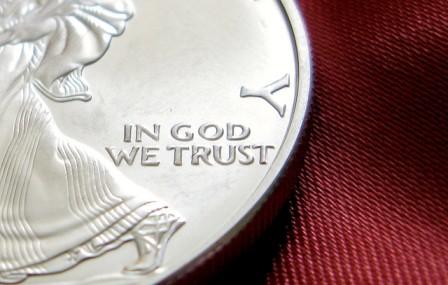
Gold prices hovered close to $1725 an ounce during this morning’s London trading, holding gains made overnight in Asia, as stocks and commodities also recovered some ground lost last week, after news that a deal may be achieved in time to avoid so-called fiscal cliff of US tax rises and spending cuts currently scheduled for the start of 2013.
Silver bullion rallied back above $32.70 an ounce, recovering Friday’s losses, while US Treasury bond prices fell along with the Dollar.
“[Silver] is still respecting its long term uptrend, [but] momentum has been very uninspiring,” says the latest technical analysis from bullion bank Scotiabank.
Congressional leaders and the White House should be able to agree a deal to avoid the fiscal cliff “within several weeks”, US Treasury Secretary Timothy Geithner said Friday.
Negotiations last week produced agreement that reforms are needed to the US tax code and to so-called ‘entitlement’ programs, press reports say.
“If the parties in the US reach agreement, that would remove uncertainty and gold’s safe haven status,” reckons Ole Hansen, head of commodity strategy at Saxo Bank. “But the low interest rate environment is not going to go away.”
The so-called speculative net long position of Comex gold futures and options traders – measured as the difference between ‘bullish’ and ‘bearish’ contracts – rose in the week ended last Tuesday, having fallen for the previous four weeks running, weekly data published Friday by the Commodity Futures Trading Commission show.
“The positive reaction apparent in these numbers was largely due to the successful re-election of President Obama,” says Marc Ground, commodities strategist at Standard Bank.
“Participants were emboldened by the belief that an Obama win would ensure that the Fed will continue with its accommodative stance. Strong physical demand also helped sustain the upward momentum.”
The volume of gold bullion held by exchange traded funds tracked by Reuters rose to a new record last Friday, at just under 2346 tonnes. Holdings in the world’s largest gold ETF SPDR Gold Shares (GLD) also rose to a new all-time high, ending last week at 1342.6 tonnes.
Net speculative length among silver futures traders also rose last week, like gold breaking a four-week losing run.
“However, the 116.5 tonne increase of the past week appeared even more insipid than was the case for gold,” says Standard Bank’s Ground, “given that silver has seen 1,287.3 tonnes liquidated the previous four weeks.”
For commodities as a whole, Friday’s CFTC data show a six straight decline in net long positioning among managed money, the longest run of weekly falls since 2008, Bloomberg reports.
“I am not bullish on commodities,” says Martin Murenbeeld, chief economist at Canadian wealth management firm DundeeWealth. “I don’t think we are going to see improvement in the world economy for some time as there are too many problems.”
On the currency markets the Euro rallied against the Dollar, making up most of the ground it lost last Friday.
The Yen meantime fell to its lowest level against the Dollar in seven months this morning, ahead of tomorrow’s Bank of Japan interest rate decision, following the decision by Japan’s prime minister Friday to call a general election for December 16.
The leader of the opposition Liberal Democrat Party, which is ahead in the polls, has called for the BoJ to print “unlimited Yen” and set interest rates below zero if necessary.
“Continued talk and questions over potential changes for the BoJ has weighed on the Yen,” says Audrey Childe-Freeman, head of foreign exchange strategy at BMO Capital Markets. “It’s most unlikely the BoJ will make major changes this meeting, but the trend seems to be changing.”
Over in Europe, Bundesbank president Jens Weidmann told an audience at Euro Finance Week in Frankfurt that giving the European Central Bank supervisory powers over financial institutions could create a conflict of interest with monetary policy.
“Both areas must therefore be strictly separated,” said Weidmann. “This separation is doable, but difficult – difficult from an organizational viewpoint and difficult from a legal viewpoint.”
A sneaky thing happened over the last five trading days. The major gold mining companies leapt back into oversold territories (when measured against gold), the likes of which are only seen a few times a century. This summer as many mining analysts pointed out, miners hit their most oversold levels in the last 30 years, and only seen five times in the last 100. Following this extreme, the GDX rallied from $41 to $55 per share, a 34% move in two months, and the GDXJ made a 38% move in the same period.
Here is a chart of the GDX to GLD ratio. As you can see it has exploded upwards in the last few trading days.
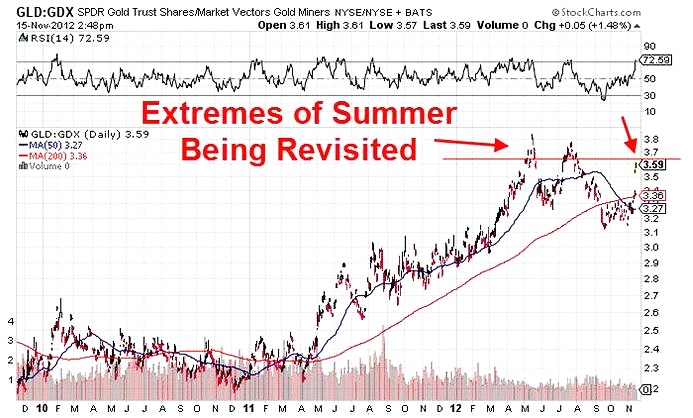
When looking at this chart, the question must be asked – are we setting up for a sharp decline in the ratio, which would indicate another explosive rally in the miners?
There is never any certainty in the financial markets, but in recent conversations with friends of mine I’ve been saying the same thing over and over. When they ask me if now is a good time to buy mining shares I say:
“If you met a man who was 100 years old, and asked him if he’s ever seen the mining sector this cheap, he might do two of two things. He might first creak back in his wooden rocking chair (you not being sure if the creak is his back or the rocking chair itself), and second he might say, ‘Ahh yes. I’ve seen mining shares this sold off when compared to gold 5 times in my life. Once when I was 20, once when I was 40, once when I was 60, once when I was 80, and… now.’”
The risks are simply too great to buy retail investments during any of the other 95 years of this “old man’s” life. If you are not a mining executive, accredited investor, or resource developer, these are the only times in which your investment dollars can buy extreme leverage, and they must be looked upon as extreme and short-lived opportunities.
If you’ve ever used public transportation in a major city before, you know the train or bus conductor could care less whether or not you make it on before the doors close. The same could be said about the markets. They could really care less whether or not you get on at the right time. But heck…if a bus route only comes around once every 20-30 years… why not hop on and see where it takes you?
In more clear terms, I think this a good time to assemble a list of your favorite mining stocks, and see where they take you over the next 12-24 months.
NEWS RELEASE.
November 16, 2012: Vancouver, BC – Balmoral Resources Ltd. (Stock Profile – TSXV:BAR & OTCQX:BALMF) reported today that the Company received a total of $6,578,655.80 from the exercise of share purchase warrants which expired on November 9, 2012. Of the total above, $5,067,916.94 has been received by the Company since September 21, 2012. The warrants in question were issued as part of Balmoral’s initial financing completed in November of 2010.
With receipts from the warrant exercises, as at November 16, 2012, Balmoral has working capital of $19 million, which includes $14.6 million in cash. The Company has 84,507,289 shares issued and outstanding and, on a fully diluted basis, would have 88,700,289 shares issued.
“Balmoral is now in a stronger financial position than it has been at any time during its brief history,” said Darin Wagner, President and CEO. “Our cash on hand will allow us to continue aggressive expansion of our high-grade gold discoveries at Martiniere, and exploration throughout our district scale land holdings along the Detour Gold Trend in Quebec, through 2013. We thank those investors who demonstrated their support by exercising their warrants despite what are clearly challenging market conditions.”
For more on Balmoral Resources – CLICK HERE.
CompanyFeed™
NEWS RELEASE
November 15, 2012: Montreal, Quebec – Stornoway Diamond Corp. (Stock Profile – TSX: SWY) announced that its wholly-owned subsidiary Les Diamants Stornoway (Canada) Inc. has entered into a Framework Agreement and an associated Letter of Intent (collectively the “Agreement”) with the Government of Québec for the financing and completion of the Route 167 Extension under Stornoway’s direct management. The Agreement is designed to ensure timely road access to the Renard Diamond Project and the commencement of mine construction during 2013, as previously contemplated. Key features of the new Agreement are as follows:
- Stornoway to assume the completion of segments “C” and ”D” of the Route 167 Extension as a single lane mining grade road; and
- Québec to provide Stornoway with an unsecured credit facility of up to C$77m to complete the work, at an annual interest rate of 3.35% percent, amortized over 15 years, with a repayment schedule based upon planned commencement of commercial production at Renard.
In addition, and in support of Stornoway’s construction schedule for Renard, Québec has agreed that:
- The Québec Ministère des Transports (“MTQ”) shall continue with the construction of a winter road this season as previously planned, providing temporary road access to Renard by March 2013; and
- The Québec Ministère du Développement Durable, de l’Environnement, de la Faune et des Parcs and the MTQ shall transfer all relevant authorizations for Stornoway to commence mining road construction by April 2013.
As a result of the Agreement, Stornoway now anticipates first all-season vehicle access to the Renard project site by the 4th Quarter of 2013, compared to July 2013 previously.
Matt Manson, Stornoway’s President and CEO commented: “Today’s news represents the removal of a major element of uncertainty over the Renard Diamond Project. With Stornoway now responsible for the completion of the project’s access road, we will be in full control of our overall development schedule for the first time. The financing terms that we have negotiated to complete this work are beneficial to Stornoway, and are expected to have a minimal impact on the project’s overall valuation and financing capacity. This is an excellent example of government and the mining industry working in partnership to achieve a common goal.”
Mr. Manson continued: “Since Stornoway’s October 29th announcement of the potential for a delay in the completion of the Route 167 Extension, we have moved quickly to re-establish a viable plan for road access to Renard during 2013. The Agreement announced today achieves this, and allows us to continue moving forward with our project financing and development activities. This positive outcome will benefit our shareholders, our community partners and Québec in equal measure.”
To read more – CLICK HERE.
CompanyFeed™

The Eurozone fell into recession in Q3, according to official gross domestic product data published Thursday.
Eurozone GDP shrank 0.1% from Q2, a 0.6% year-on-year drop. Germany and France both grew 0.2% quarter-on-quarter, while Italy’s economy shrank by 0.2%. Spain’s economy also contracted, shrinking 0.3% in the three months to end September, while in the Netherland GDP fell by 1.1% during Q3.
Eurozone inflation meantime fell to 2.5% in October, down from 2.6% a month earlier, consumer price index figures published by Eurostat show.
The European Central Bank’s Outright Monetary Transactions program, under which the ECB proposes to buy sovereign debt in the secondary market, “will not lead to inflation”, ECB president Mario Draghi told an audience at the Università Bocconi in Milan this morning.
“For every Euro we inject, we will withdraw a Euro,” said Draghi. “In our assessment, the greater risk to price stability currently is associated with the possibility of falling prices in some Euro area countries.”
Prices for German bonds ticked lower this morning, as did prices for longer dated US Treasury bonds while longer-dated UK gilts saw gains.
Federal Reserve policymakers meantime discussed the use of using quantitative economic thresholds to communicate their outlook on policy when they met last month, minutes from the Federal Open Market Committee published Wednesday show.
The Fed has said it will buy $40 billion of mortgage backed securities a month until there is a “substantial improvement” in the US labor market, although it has not defined what that means. The Fed is also due to continue with its maturity program known as Operation Twist, which attempts to ‘flatten’ the yield curve for US Treasury bonds, until it expires at the end of this year.
“Looking ahead,” the FOMC minutes say, “a number of participants indicated that additional asset purchases would likely be appropriate next year after the conclusion of the maturity extension program in order to achieve a substantial improvement in the labor market.”
NEWS RELEASE.
November 14, 2012: Vancouver, BC – Goldgroup Mining Inc. (Stock Profile – TSX: GGA & OTC:GGAZF) announces that Chester F. Millar has been appointed Chairman of the Company, replacing Gregg J. Sedun as Executive Chairman. Further to the Company’s news release dated October 12, 2012 announcing Mr. Sedun as Interim Chief Executive Officer and President, the Board of Directors has now appointed the Company’s Lead Director, Dr. Hans von Michaelis, to fill the role of CEO and President. Dr. von Michaelis will continue to serve on the Board of Directors. Mr. Sedun is a major shareholder of the Company and will continue to serve on the Company’s Board of Directors.
Chester Millar stated, “My vision for Goldgroup is to provide strategic and visionary direction for the Company. I would like to thank Mr. Sedun for being an integral part in the development of Goldgroup and for all of his significant contributions over the past six years. We look forward to working with Mr. Sedun as he continues to assist the Company accomplish its strategic goals as a member of the Board of Directors.”
The Company also announces that Michael Clark has replaced John J. Sutherland as the Company’s Chief Financial Officer. Mr. Sutherland was a valuable member of Goldgroup’s team, and the Board of Directors
wishes him the best in his future endeavours.
The Executive Management changes are part of the Company’s continued focus on optimizing capital and other costs. The newly appointed Chairman and CEO will not receive remuneration. The Company is also committed to streamlining its permitting and operational processes in order to expand gold production on a timely basis.
Chester Millar is considered one of the mining industry’s most successful company builders. Mr. Millar was inducted into the Canadian Mining Hall of Fame in 2008, with a career that includes being a founder and former Chairman of such notable large and successful gold companies as Glamis Gold Ltd., Eldorado Gold Corporation and Alamos Gold Inc.
For more on Mr. Millar – CLICK HERE.
CompanyFeed™

Osisko Mining announced the friendly $550-million acquisition of Queenston Mining and its Upper Beaver project in Kirkland Lake, Ontario yesterday.
A number of mining companies have been sharpening their focus on local assets and Osisko (Stock Profile – TSX:OSK & OTC:OSKFF) is no exception. Last April, Bay Street miner Iamgold bought-out Trelawney Mining and Exploration, a low-key Ontario gold explorer in what many felt was a move to have a bigger presence in their own backyard.
The news of Osisko Mining’s acquisition of Queenston Mining (Stock Profile – TSX:QMI & OTC:QNMNF) has not been well received by the market. Since the announcement Osisko’s shares are down almost $1.00 from Friday’s $9.82 closing price.
About the transaction, Osisko President & CEO Sean Roosen states, “Queenston is an excellent strategic fit within our existing Canadian portfolio and, in our view, is one of the best undeveloped high-grade opportunities and significant open pit targets in Canada. Osisko has always sought to be a part of camps rather than isolated assets, and this transaction provides us with a highly strategic land package in another prolific Canadian gold camp.”
So what’s going on?
Analysts are beginning to weigh in on the deal and the assessments are relatively consistent. The consensus is that in a risk adverse environment Osisko has effectively increased their respective risk profile via the acquisition of Queenston.
Raymond James analyst Brad Humphrey writes, “This transaction appears to represent a shift in direction for Osisko from the bulk mining, low grade, (soon to be) large producing Canadian Malartic operation to now encompassing the higher grade, underground mining, smaller producing Upper Beaver project.”
Humphrey also commented that from a valuation perspective it appears Osisko paid a fair price for Queenston’s assets.
TD Securities analyst Daniel Earle notes, “We believe the transaction comes at what may be a sensitive time for shareholders.” And, “We believe that the negative market reaction to the transaction partially stemmed from the downbeat implications to both near-term free cash flow and the potential for an inaugural dividend next year.” Earle decreased his price target on Osisko’s shares to $11.50 from $13.50.
However, this deal also brings into question Osisko’s long-term direction with respect to the future of its secondary project Hammond Reef. Plus, Osisko has been dealing with a series of issues with design rate production at its flagship Canadian Malartic mine in Quebec since its first gold pour in April, 2011.
These issues, coupled with the current aversion to risk in the markets, perhaps explains why investors are not welcoming the deal with open arms.
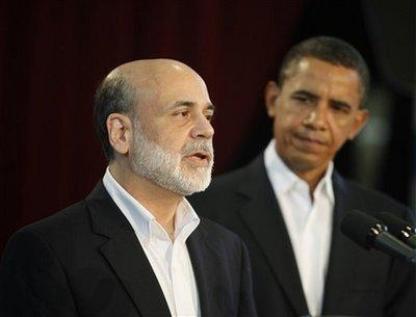
Many folks in the gold and silver community write to me, voicing their distaste in the economic and monetary policies of the Obama administration, and in particular, the “monetary easing” conducted by the US Federal Reserve. At surface, I understand—printing money (much like the printing of shares) is like watering down your milk in order to make a cup for Fat Albert, who sits at home all day and watches TV.
However, when you’re a beneficiary of this paper asset dilution process–why spend all your time anguishing over it?
Inflation and monetary expansion isn’t just a fiscal disciplinary problem—it’s a human problem. Wherever there are humans, there will be inflation. Period.
The inflation may occur within a paper money system, or the inflation will occur in the production of fake coconut-shell currency units, or gold-dipped tungsten bars. The act of becoming emotionally bothered by a human phenomenon such as inflation, is my opinion, is to be ignorant of history. It happens all the time, and it’s completely normal—get used to it.
The idea in protecting yourself, is to own physical assets which offer a multitude of advantages. A producing farm for example, may offer you income, and the agricultural products will rise in value at the rate of (and sometimes much higher than) the rate of inflation. Additionally, you can eat your farm production, which offers you security, saves you time, money, and tax dollars. Lastly—you can have fun in your farm. You can learn to milk cows, slaughter chickens, ride horses, and even roll around in the hay if you wish.
Owning a producing gold mine or oil well offers similar advantages (minus the “rolling around-in” option of course), in that you will have ownership of physical assets, and an income which rises with inflation. Owning assets in the ground held within an exploration company may also offer highly leveraged upside against inflation if the company is managed properly, however, there are a myriad of risks when considering publicly traded companies.
If you’re a fiscal conservative, gritting your teeth at another “4 more years”—I suggest relaxing the tension in your body, taking in a deep breathe, and allowing a pleasant smile to grace your face. Know that by building a fortress of hard assets, the Obama/Bernanke duo represent “good time Charlie’s”—with their hands deep in the cherry jar. They’re tossing out cherries one by one, and your job is to catch as many as you can during this time.
Consider this reelection as a victory for your “hard asset team”, and make plans to become sharper, wealthier, more skilled, and more adaptive than ever before.
Cheers to four more years.

Capital inputs account for about half the total costs in mining production – the average for the economy as a whole is 21 per cent. Obviously many of the costs, once incurred, cannot be recovered by sale or transfer of the fixed assets.
Mining is an extremely capital intensive business for two reasons. Firstly mining has a large, up front layout of construction capital called Capex – the costs associated with the development and construction of open-pit and underground mines.
There are often other company built infrastructure assets like roads, railways, bridges, power generating stations and seaports to facilitate extraction and shipping of ore and concentrate. Secondly there is a continuously rising Opex, or operational expenditures. These are the day to day costs of operation; rubber tires, wages, fuel, camp costs for employees etc.
Copper mining has become an especially capital intensive industry – the average capital intensity for a new copper mine in 2000 was between US$4,000 – $5,000 to build the capacity to produce a tonne of copper, now capital intensity is north of $10,000 per tonne, on average, for new projects.
Capex costs are escalating because:
- Declining copper ore grades means a much larger relative scale of required mining and milling operations;
- A growing proportion of mining projects are in remote areas of developing economies where there’s little to no existing infrastructure.
The bottom line? It is becoming increasingly expensive to bring new mines, especially new copper mines, on line and run them:
- Antofagasta’s (Stock Profile – LSE:ANTO & OTC:ANFGY) Esperanza Sur project capex went from under US$3 billion to US$3.5 billion;
- Inmet’s (Stock Profile – TSX:IMN & OTC:IEMMF) Cobre Panama project capex climbed to US$6.2 billion from US$4.8 billion, that’s a capital intensity north of $15,000/t;
- Teck’s (Stock Profile – TSX:TCK.B & NYSE:TCK) Quebrada Blanca’s capex is US$5.6 billion. The amount of money required to build Teck’s new, and very large copper mine in a difficult environment, corresponds to a US$28,000/t capital intensity.
There are several serious concerns in regards to global resource extraction that we need to consider:
- Resource nationalism/country risk;
- A looming skills shortage;
- Smaller areas open for exploration;
- Competition with Chinese mining investment;
- Low hanging fruit, the high quality large deposits have already been found;
- Supply bottlenecks for equipment;
- Lack of financing options for smaller deposits;
- Lack of innovation and technological advancements;
- Incredibly difficult and lengthy permitting processes;
- Declining open pit production;
- Ongoing operational issues;
- Environmental group and labor risks;
- Natural disasters;
- Lower economic attractiveness of new projects.*
*Capex and Opex cost inflation have been felt across the entire mining industry for the past several years in what many say is the most severe cost escalation environment in decades.
The International Copper Study Group (ICSG) recently released its 2012 Statistical Yearbook. According to ICSG data the mine capacity utilization rate averaged 81% from 2008-2011 and mine production grew by an average of only 0.9% per year. The ICSG Yearbook says the low numbers were a result of numerous factors including lower head grades, labor unrest, technical problems, and temporary shutdowns or production cuts.
Consider the Following
Resource nationalism is increasing – Xstrata Plc’s (Stock Profile – LSE:XTA & NASDAQ:XSRAF) plans to create a $5.9 billion copper-gold project in the Philippines has been halted because of a mining reform bill.
At least 15 mining projects in Peru (world’s second largest copper producer) have been delayed with their start dates set-back for up to two years because of social unrest, mining investment in the country is expected to fall 33% in 2013 because of the unrest.
Barrick Gold Corp. (Stock Profile – TSX:ABX & NYSE:ABX) has lowered its copper production outlook for 2013 due to permitting delays at its Jabal Sayid project in Saudi Arabia.
Chile is the world’s top copper producer but the country as a whole is woefully short of power. The country’s power generation capacity currently stands at 17,000 megawatts. It is estimated that the country will need at least 30,000 megawatts of power by 2020 to keep up with the demand, the increased demand coming primarily from mining projects. Unfortunately the government only plans to add 8,000 megawatts between now and 2020 and there is serious opposition to these plans from environmental groups who have, so far, been wildly successful by suspending several key projects and more than $22 billion worth of power investment. The Chilean Supreme Court recently struck down the planned 2,100-megawatt, $5 billion Castilla thermoelectric power plant project, citing environmental concerns.
Codelco, the Chilean state owned copper company, and the world’s largest copper miner with 20% of global copper reserves, said their 2012 first half copper production fell 6.4% because of lower grades mined. Codelco’s direct cash costs increased 27% year-on-year mostly because of paying higher prices for electricity from the drought stricken SIC grid.
Many copper mining companies are having to go back to the drawing board in regards to their economic studies trying to lower their cost of production.
Zambia is Africa’s largest copper producer (and wants to directly market its copper), in second place is the DRC. The copper-belt which straddles Zambia’s and the Democratic Republic of the Congo’s borders is being tied up for internal development by the two countries. The DRC and Zambia are amending their mining codes to enable the government to raise taxes and implement a 35-percent minimum ownership threshold for state shareholding in projects.
According to the World Bureau of Metals Statistics (WBMS), the global copper market had a deficit of 129,000 tonnes for the first six months of 2012 on consumption of 10.2 million tonnes.
China uses 43% of the worlds copper. Chinese copper prices are in line with LME prices, Chinese traders are not de-stocking and the countries copper imports are on track for a record pace.
“Total copper product imports improved 4% YoY and 11% MoM and are up 5% YTD, in line with our expectations of copper consumption growth in China this year. We attribute this result to the emerging pockets of strength for copper use in China, namely in power infrastructure, white goods restocking and auto production.” Morgan Stanley
Commodities expert Jim Rogers said there are three questions you need to ask (and answer) to determine if a commodity is headed higher in price.
Let’s answer based on copper’s perspective:
Q – How much production is there worldwide?
A – Not enough, most older existing mines, the foundation of our supply, have increasing costs with production rates stagnating or even declining because of lower grade ore. Half of the world’s copper reserves are more than 50 years old and four of the seven largest copper producers are over 70 years old.
Q – Are there new sources of supply?
A – Yes, but the rate of depletion is much greater than the rate of discovery.
We are also faced with increasingly complicated and more expensive extraction of metals from increasingly harder to find, lower grade ore bodies in almost inaccessible and hostile parts of the world
Q – Are there new potential supplies?
A – Yes, if energy was cheap and unlimited then recoverable resources would be unlimited. The metal content of copper ore has been falling since the mid 1990s. A miner now has to dig up an extra 50 percent of ore to get the same amount of copper. As grade drops the amount of rock that must be moved and processed per tonne of produced copper rises dramatically – all the while using more energy that costs several times more than it use to.
With the lower grades of ores now being mined energy becomes more and more of a factor when considering economics. The cost of energy is climbing, the amount used is climbing but the returns from energy expended is declining. Eventually the quantity of resources used in the extraction process will be 100% of what is produced
Conclusion
Increasingly we will see falling average grades being mined, mines becoming deeper, more remote and come with increased political and nationalization risk. Extraction of metals from the mined ore will become increasingly more complex and expensive, even more so when one considers the effects of increased energy costs – the cost of technology innovation to power mining will be very high.
The facts are:
- Highly capital-intensive greenfield projects in geo-political risky developing countries requiring significant infrastructure investment beyond the ordinary scope of the mining operations are associated with a higher risk of delays and capex overruns.
- Capital intensity best determines a project’s potential return and capital intensity clearly favors Brownfield projects in countries with adequate existing infrastructure.
“In 2014, substantially all the mine production growth will come from new greenfield projects and these are subject to higher risk of production shortfall. New production from Africa, where infrastructure is less developed, also faces higher risk of shortfall particularly from power disruption.” FitchRatings, Base Metals Update
BMO’s London-based mining analyst Tony Robson said; “Major copper projects required to meet demand long term are located in riskier jurisdictions, and come with increased execution risk; 75% of estimated additional supply required between 2010 and 2025 is from greenfield projects.”
“This lack of inventory growth is the hardest indicator that there has neither been a significant negative shock to demand nor a pronounced destocking cycle.” Andrew Keen, Head of Metals and Mining Equity Research for Europe, the Middle East and Africa, CNBC’s Asia Squawk Box
The few new mines that are being developed in geo-politically safe jurisdictions in close proximity to existing mines should be able take advantage of:
- Pre-existing infrastructure such as transport corridors, processing and power plants;
- A known, established permitting process;
- No green, or environmental opposition.
In 2005 copper prices collapsed to under $3,000 a tonne leading many miners to rethink mine development and expansion plans, prices nearly tripled by 2007 because of a vastly under supplied market.
Perhaps higher Opex costs, Capex overruns, permitting delays, social unrest and resource nationalization should be on all our radar screens. Are they, and a brownfield copper investment opportunity, on your screen?
If not, maybe they should be.

Gold bullion market traded above $1730 an ounce Friday morning in London, having earlier touched a two-week high, while stocks fell and the Dollar and US Treasury bonds gained, with analysts suggesting weak growth and monetary policy are likely to persist.
Silver bullion traded close to $32.30 an ounce for most of this morning, 4.3% up on the week, while oil and copper prices ticked lower.
“Precious metals continue to push higher, with the rest of the complex being led by gold,” says Marc Ground, commodities strategist at Standard Bank. “In spite of Dollar strength, the market appears to continue to take comfort from Obama’s re-election and the implied support this gives to continued monetary accommodation from the Fed.”
Heading into the weekend, gold bullion looks set to record its first weekly gain since the start of October, having risen more than 3% since the start of the week.
Gold traders are at their most bullish since August 24, according to newswire Bloomberg, which reports that 25 of 33 analysts polled say they expect gold bullion to rise next week. Friday August 24 saw the first of five consecutive weekly gains for spot gold.
“Renewed inflows into gold ETFs are responsible for the increase in price,” says a note from Commerzbank, “having totaled 10.5 tonnes in the past three days alone.”
Gold’s 1.7% jump on Tuesday could have been caused by a gold purchase made by the Soros Fund, Standard Bank’s Yuichi Ikemizu writes in his daily ‘Bruce Report’ today, citing a rumor circulating among New York traders.
“Markets continue to trade on a weak note given lingering [US] fiscal cliff concerns and worries about whether Greece will get the funding it needs to meet debt payments” says Nick Verdi, Singapore-based currency strategist at Barclays.
ECB president Mario Draghi told a press conference Thursday the European Central Bank is “by and large, done” with assisting Greece.
“On Greece, we certainly cannot do monetary financing,” Draghi said, though he added that the ECB did agree a part of Greek debt restructuring back in February that it will forego profits on holdings of Greek debt bought under its Securities Markets Programme.
“What happens is that these profits naturally accrue to the central banks that are members of the Eurosystem…[who may then] transfer these profits to the governments and then it is up to the governments to decide whether they want to re-use these profits for Greece. And the governments actually committed themselves to do so at that time.”
Draghi also answered a series of questions on whether he would like to see Spain request a bailout by saying it is up to the Spanish government and not the ECB. The ECB’s sovereign bond buying program, Outright Monetary Transactions, requires a government to have agreed to an adjustment program before the ECB will buy its bonds in the secondary market.
Benchmark yields on 10-Year Spanish government bonds touch a one-month high this morning, a day after Spain auctioned longer-term bonds for the first time in 18 months, according to newswire Reuters.
“The five-year sale was awful,” said one trader, citing a wide discrepancy between the highest yield accepted for the bond and the average yield. Spain has over €100 billion of debt due to mature next year.
The ECB voted to leave its key interest rate on hold at 0.75% Thursday.
“We have penciled in an interest-rate cut in December,” says Howard Archer, economist at research firm IHS Global Insight.
The Euro fell to a one-month low against the Dollar Friday, while Euro gold prices traded within 2% of last month’s all-time high.
Elsewhere in Europe, German inflation held steady at 2% last month, according to figures published this morning.
Over in China, industrial production grew by 9.6% in the year to October, official figures published Friday show, up on the previous month and a stronger acceleration that most analysts forecast.
Retails sales growth was also stronger-than-expect last month at 14.5% year-on-year – up from 14.2% in September.
“The domestic economy is evolving in a good direction,” China’s central bank governor Zhou Xiaochuan said Thursday, ahead of the release of the above data.
“The key question for investors,” says Bank of America Merrill Lynch economist Lu Ting, “is whether China’s economic growth has truly bottomed out. Based on October data… the answer is firmly yes.”
China’s consumer price index meantime shows inflation fell to 1.7% last month, down from 1.9% a month earlier.
“The October CPI confirms that inflation is currently not a main concern for the government,” says Nomura analyst Zhang Zhiwei. “Policy easing will likely continue in Q4 to support a growth recovery.”
Chinese gold bullion demand is expected to hit 860 tonnes this year, a 1% increase on 2011, according to Philip Klapwijk, global head of metals analytics at consultancy Thomson Reuters GFMS.
“China will overtake India [this year],” Klapwijk told the online Reuters Global Gold Forum Thursday, “both in overall demand terms and as the world’s largest jewelry market.”
NEWS RELEASE.
November 9, 2012: Vancouver, BC – Balmoral Resources Ltd. (Stock Profile – TSXV:BAR & OTCQX:BALMF) today reported results from the first 3 of 20 holes drilled in the Bug Lake area of its Martiniere Property during the recently completed Fall 2012 drill program. Results include further confirmation of the very high grade nature of the Bug Lake Footwall Zone. Hole MDE-12-65 returned anomalous gold mineralization over an interval of 81.00 metres, including a high-grade Footwall intercept of 7.94 g/t gold over 19.70 metres. As with other previous intercepts from the Footwall Zone, this broader interval contains a sulphide-rich core which returned 21.18 g/t gold (0.62 oz/ton) over 6.45 metres (21.16 feet). The core of this intercept occurs at approximately 50 metres vertical depth.
“With a shallow, high value target like the Footwall Zone continuing to expand in proximity to several other high-grade zones of gold mineralization, today’s results further demonstrate the potential of the Martiniere gold system,” said Darin Wagner, President and CEO of Balmoral. “While others are attempting to add, or access, high-grade ounces at considerable depth we are doing so in the near surface, on multiple fronts, in one of the best mining jurisdictions on the planet.”
The Footwall Zone is one of three high-grade gold zones which occur within the 100+ metre wide Bug Lake Fault corridor on the Company’s Martiniere Property in Quebec. The Martiniere Property forms part of Balmoral’s 82 kilometre long Detour Gold Trend Project located along the Sunday Lake deformation zone in Central Quebec adjacent to the developing Detour Gold deposit in Ontario.
For a table of the results – CLICK HERE.
CompanyFeed™

Gold prices hovered just below $1720 an ounce Thursday morning in London while stocks recovered some ground following losses yesterday, and the Dollar ticked higher, as central banks in the UK and Europe left monetary policy unchanged.
“Gold is displaying relative strength and living up to its reputation as a store of value and a safe haven,” says this morning’s commodities note from Commerzbank.
Silver prices hovered close to $32 an ounce while other commodities edged higher. US Treasury bond prices gained while those for UK and German government debt fell.
“Gold is holding up well in the face of Dollar strength yesterday and today,” says commodities strategist Walter de Wet at Standard Bank.
A day earlier, the Dow Jones saw its biggest one-day drop this year on Wednesday, falling 2.4%.
The S&P 500 also fell 2.4%, the biggest one-day drop since the start of June, as focus shifted to Congress’s prospects of avoiding the so-called fiscal cliff of tax cut expires and spending cuts currently scheduled for the start of 2013.
Policies aimed at avoiding the fiscal cliff would mean that “the marginal income-tax rate is probably going to go up…from 35% to 40%, capital gains from 15% to 20%, dividends from 15% to who knows where,” Bill Gross, co-chief investment officer at world’s largest bond fund Pimco told Bloomberg Tuesday. “And ultimately if dividend and capital-gains tax rates go up, then stocks are worth less and that’s what you’re seeing.”
In contrast with stocks, gold prices rallied yesterday after an initial drop at the start of US trading, holding onto most of their gains for the week so far. Gold ETFs tracked by Bloomberg saw their gold holdings surge by more than 4 tonnes to a new record high of 2592 tonnes.
The European Central Bank left its key interest rate on hold at a record low 0.75 % Thursday.
In a speech in Germany on Wednesday, ECB president Mario Draghi argued that Eurozone inflation “is well contained” and that the ECB expects it to fall below 2% next year.
In yesterday’s speech Draghi also denied that a banking union would necessarily lead to cross-border deposit guarantees.
“Organizing and funding deposit guarantee schemes can remain a national responsibility,” said Draghi, “with comparable effectiveness.”
The Greek government narrowly won a vote in favor of fresh austerity measures last night. The vote was passed 153 to 128 out of a total of 300, while the two biggest coalition parties expelled seven members between them for failing to support the measures.
Spain’s government meantime is considering selling 109-year-old palace Castellana in the heart of Madrid in order to raise cash, newswire Bloomberg reports, citing an unnamed source.
Euro gold prices traded just below €43,400 per kilo (€1350 per ounce) this morning, within 2.7% of last month’s all-time high. Dollar gold prices by contrast are around 10% off last year’s record.
Here in London, the Bank of England today voted to leave interest rates at a record low 0.5% for the 45th month in a row. The Bank’s Monetary Policy Committee decided not to extend the £375 quantitative easing program, which ends this month.
“QE still has a benefit and those benefits will stay there,” reckons Alan Clarke, London-based economist at Scotia Capital. “They’re not unwinding any purchases…they won’t close the door on it, they’ll leave their options open.”
“The UK outlook and data are rather mixed,” adds ABN Amro economist Joost Beaumont. “Activity is worsening, and Eurozone problems are still lingering.”
China meantime will not turn its back on one party rule, outgoing president Hu Jintao told the 18th Communist Party Congress on Thursday. The Congress will see seven new members of the Politburo Standing Committee named, including replacements for Hu and Chinese premier Wen Jiabao.
Total credit growth in China has been 16%, according to figures published by Standard Chartered, while the economy, measured by nominal GDP growth, has only grown by 10%.
“Growth needs to be achieved through real structural reforms that lift productivity rather than by adding leverage,” says a note from the bank. “Otherwise, China will have a date with a financial crisis.”
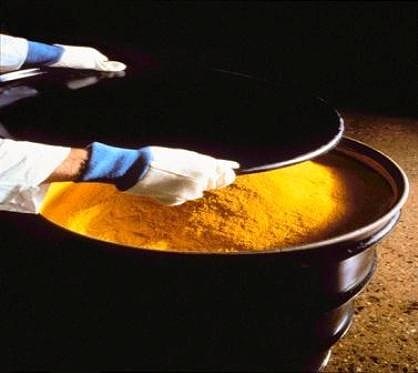
In what is becoming a familiar message on Bay Street, uranium producers have been consistently missing top line estimates in their most recent quarterly reports. Earnings have also been disappointing.
Over the past three weeks, Cameco (Stock Profile – TSX:CCO & NYSE:CCJ), Paladin Energy (Stock Profile – TSX:PDN & ASX:PDN), and now Uranium One (Stock Profole – TSX:UUU & OTC:SXRZF) have missed on analysts expectations for calendar third quarter sales.
A weak global economy and slower than expected restarts within the Japanese nuclear industry in the wake of the Fukushima disaster pushed Cameco to cut its long-term production goals.
“We’ve seen the word uncertainty a lot over the past months to describe the state of the nuclear industry and that term has proven to be very accurate,” commented Cameco chief executive Tim Gitzel.
RBC Capital Markets analyst Fraser Phillips rated Cameco Outperform but noted that the weak earnings and cut to the production outlook was a negative for the company.
Along with revising down Cameco’s long-term production, BMO Capital Markets said it recently cut its own outlook for nuclear power and uranium demand.
“With this outlook already baked into forecasts, BMO maintains its Outperform recommendation for Cameco,” wrote analyst Edward Sterck, who had a $29 price target on the company. Shares of Cameco are currently trading at $18.50 on the TSX.
Not only are the producers of Yellowcake missing estimates, there has also been a build up of inventories to record levels: $719 million at Cameco, roughly $215 million at Paladin and $176 million at Uranium One.
“It is unclear if this (build up) is a one-off coincidence – a possibility, as each company maintained guidance for the year – or reflective of other factors that may persist, such as Japanese contract deferrals,” notes Raymond James analyst David Sadowski.
Uranium One announced today that they would shelved their South Zarechnoye, Kazakhstan development project. The company deemed the project to be unattractive in the current soft uranium price environment.
Ux Consulting’s U3O8 spot price is currently $42.50 per pound – down about $10 in the past twelve months.

With one day left before the US election, opinion polls show Barack Obama and Mitt Romney are neck and neck.
“Obama is clearly ‘favored’ by the commodities markets,” says a note from Commerzbank, “mainly because of his support for Ben Bernanke and the ultra-expansionary monetary policy of the US Fed, [but] any ‘disappointment’ if Romney should come out on top is likely to be short-lived.”
“The financial markets might not like [an Obama win],” adds Steve Barrow, head of G10 research at Standard Bank. “The Dollar could go down…[but] we don’t expect any weakness to last—at least not against the Euro. For here there’s something of a gap opening up between the US’s economic performance and that of the Eurozone.”
Gold prices traded above $1680 an ounce Monday morning in London, having earlier fallen to a nine-week low, while stock markets edged lower and US Treasury bonds gained, with one day to go before the US presidential election. The US Dollar Index, which measures the Dollar’s strength against other major currencies, rose to a two-month high.
“Gold is still holding the long-term uptrend support at $1631,” says the latest technical analysis from bullion bank Scotiabank. “There is also support at $1661.”
Silver bullion rallied back to $31 an ounce, while on the commodities markets, oil was broadly flat while copper prices edged lower.
Gold remains more than 2% off where it started the month, while silver is down more than 4%, after both metals fell sharply on Friday following the release of better-than-expected US nonfarm payroll data.
In the US, the so-called speculative net long position of Comex gold futures and options traders – the difference between the numbers of bullish long and bearish short contracts held by traders classified as noncommercial – fell for the third week running in the week to last Tuesday, weekly figures published Friday by the Commodity Futures Trading Commission show.
“Given the excessive length of the past weeks and a rising uncertainty among investors over the ability of QE3 to support prices and/or the longevity of the Fed’s open-ended commitment to easing, the liquidations [of long positions] are unsurprising,” says Standard Bank commodities strategist Marc Ground. “The market is considerably less strained than it was several weeks ago — net speculative length as a percentage of open interest has come off considerably…which could see some consolidation emerge.”
Bullion dealers in Asia meantime “are not in a rush to buy because there is plenty of supply around,” one Singapore-based trader told newswire Reuters this morning. “But if prices drop below $1650, there will be good demand and supply will tighten up.”
This Sunday sees the festival of Dhanteras in India, followed by Diwali two days later, both traditionally associated with buying gold.
“The peak marriage season is immediately after Diwali,” says Mehul Choksi, chairman of Indian jewelry group Gitanjali. “We expect sales to grow by 35-40% this Dhanteras.”
“If gold remains at the current price level,” adds Kumar Jain at Mumbai jewelers Umedmal Tilokchand Zaveri, “jewelry sales will definitely surge as people are also buying for the marriage season.”
While in Europe, Greek prime minister Antonis Samaras has promised MPs that a fresh round of austerity measures would be “the final one”, ahead of a parliamentary vote on reforms this Wednesday. The result of the vote could influence whether or not Greece gets its next tranche of bailout money, worth €31 billion.
“The Greek risk could come to a head this week,” says Holger Schmieding, chief economist at Berenberg Bank. “Greece matters as a trigger of potential contagion to the much bigger economies of Italy and Spain.”
The number of unemployed in Spain rose by 128,200 last month, official figures published this morning show, considerable more than expected.
Some European sovereigns could potentially reduce their borrowing costs by issuing bonds collateralized with gold bullion, CNBC reports, citing Tilburg University economist Sylvester Eijffinger.
Eijffinger is the latest economist to back such an idea, which has been proposed by the World Gold Council and which the subject of a draft paper published by the European Parliament in September.
NEWS RELEASE.
November 2, 2012: Vancouver, BC – Goldgroup Mining Inc. (Stock Profile – TSX: GGA & OTC:GGAZF) announces the appointment of Dustin VanDoorselaere as the Company’s Vice President, Operations. Mr. VanDoorselaere brings 17 years of mining experience with a diverse background in both open pit and underground operations in a variety of jurisdictions, including Canada, Australia, Ghana and Mexico. He provides extensive expertise in starting up new mines and streamlining existing operations.
Mr. VanDoorselaere has been with Goldgroup since May 2011 as Projects Manager, principally working on the design and permitting of the Caballo Blanco project. Prior to joining Goldroup Mr.VanDoorselaere worked as a Technical Services Manager with AuRico Gold Inc. at both its El Cubo and Ocampo operations in Mexico, as Mining Manager at Red Back Mining Inc.’s Akwaaba Deeps underground mine in Ghana, and has had operations and engineering roles in open pit and underground mines in both Australia and Canada for Norilsk Nickel Mining and Metallurgical Co., Inco Ltd., Placer Dome Canada Ltd., Orica Canada Ltd. and Consbec Inc. Mr. VanDoorselaere holds a Mining Engineering and Biology degree from Laurentian University.
Goldgroup also announces that Mr. Patrick Glynn has resigned as the Company’s Vice President, Technical and Projects, to pursue other interests. The Company would like to thank Mr. Glynn for his contribution and wishes him well in his future endeavors.
To learn more about the appointment – CLICK HERE.
CompanyFeed™
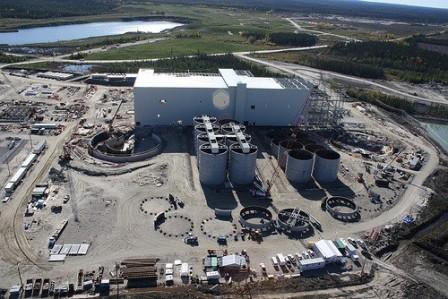
The Abitibi is one of the world’s most prolific gold mining districts having produced over 100 mines, and 170 million ounces of gold since 1901.
Two of the region’s most recent success stories include Osisko Gold’s Malartic mine (Stock Profile – TSX:OSK) and Detour Gold’s massive Detour Lake discovery – soon to become Canada’s largest operating gold mine (Stock Profile – TSX:DGC).
But there’s a new kid in town – Balmoral Resource (Stock Profile – TSXV:BAR & OTCQX:BALMF). Balmoral continues to release results from their summer drill program in Quebec, Canada. And to date, the Abitibi has been very kind. Past results included 272.39 grams per tonne over 3.88 meters announced in mid-August.
Yesterday, more drill results were released and, yet again, the results were positive including 22.89 grams per tonne over 4.1 meters.
About the results, President and CEO Darin Wagner stated, “Over the course of the summer drill program at Martiniere we have gone from defining/expanding one high-grade gold zone (Martiniere West), to now having four zones contributing to the expanding gold inventory on the Property.”
Despite the strong news the company’s shares have been stuck in a narrow trading range between $0.88 and $0.98. Why is this the case? Well, the laws of supply and demand, of course.
12.6 million warrants issued by Balmoral at $0.94 are set to expire on November 9th, 2012. Pretty much an endless supply of stock. However, looking at the glass being half full – a substantial overhang in the market is about to be removed.
Recently, company president Darin Wagner was featured on BTV. In the interview Darin talks about the company’s commitment to exploration and development and why the Abitibi gold belt continues to deliver.
Disclosure: at publication date Balmoral Resources is a client of MiningFeeds.
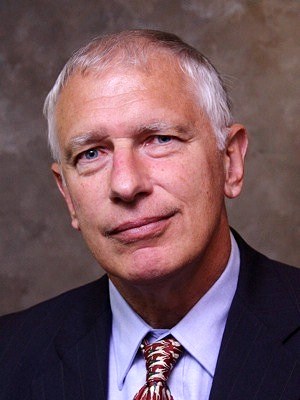
Doug Casey is a respected author, publisher and professional investor. He has authored newsletters and alert services for investors for over 28 years. These services have evolved into Casey Research and The Casey Report – a subscription based service.
To describe Doug Casey as “worldly” is appropriate. Doug divides his time between Aspen, Colorado; Auckland, New Zealand; and Salta, Argentina. Doug has lived in 10 countries and visited over 175.
Doug literally wrote the book on profiting from periods of economic turmoil: his book Crisis Investing spent multiple weeks as #1 on the New York Times bestseller list and became the best-selling financial book of 1980.
Fast forward to 2012, Doug thinks the current economic crisis is far from over. Recently, he stuck his neck out and predicted an Obama win followed by a deeper economic recession.
Casey classifies himself as a contrarian investor and has been a mainstay in the speculative Canadian junior resource markets for decades. We welcome Doug Casey to our Top Mining Minds series.
What factors will drive the mining markets over the next 12 months?
I expect higher gold prices. I hate saying that with the metal over $1700, after it’s been rising steadily for a decade, because by nature I’m a bottom fisher and a value player. But higher gold prices will be driven by money printing by central banks all over the world, and increasing fear on the part of people with assets.
You must remember that gold (along with silver) is the only financial asset that is not simultaneously someone else’s liability. I’m not so bullish on commodities in general, however. We’re still in the early stages of The Greater Depression, and demand will fall for most commodities – along with the general standard of living.
What should investors be doing right now?
Investors should anticipate more bubbles, similar to those in stocks (in the late 90’s) and real estate (before 2007) caused by this money printing. There will likely be bubbles in both gold, and gold stocks. It will, however, be ever harder to be an investor: someone who allocates capital to create more wealth. Everyone will increasingly be forced to be a speculator: someone who attempts to profit from politically caused distortions in the markets.
What are your top picks and why?
Quality junior explorers will have their day in the sun. Right now, relative to precious metal prices, they’re the cheapest they’ve been for many years. So I’m buying private placements in well-managed companies that have viable proven resources.
To read more interviews from our Top Mining Minds series – CLICK HERE.
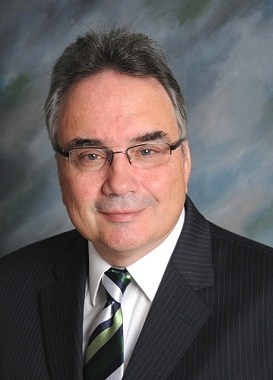
Peter Grandich is the founder of Grandich Publications, the publisher of The Grandich Letter since 1984. His commentary on the metals and mining sector has been read by tens of thousands of people around the world. Today, The Grandich Letter is one of the most popular financial blogs on the internet.
In 1987, Peter was dubbed “The Wall Street Whiz Kid” by Good Morning America after accurately predicting the Black Monday stock market crash. Since then, Peter has been an advocate of metals and mining and a critic of U.S. monetary policy.
Peter caught widespread media attention in December, 2011 when he called out fellow financial commentator Dennis Gartman for stating the bull run in gold was “dead”. Grandich challenged Gartman to a one million dollar bet that gold would see $2,000 before it would see $1,000. A bet that was not accepted by his counterpart.
About gold and it’s lack of support from the financial community, Peter suggests that gold will never find universal overall support because to do so would undermine what drives the financial services industry worldwide – the buying and selling of financial assets.
We connected with Peter Grandich in the second installment of our Top Mining Minds series to learn his take on the mining equity markets.
What factors will drive the mining markets over the next 12 months?
Despite general metals prices much, much higher than a decade or two ago, the mining and exploration industry is far more challenged now than ever before. This is especially true as you move further down the food chain into the junior resource sector. Among the numerous reasons for plight in the junior sector are:
- The audience for mining and especially exploration shares has shrunk despite the dramatic increases in metals prices themselves. A clear example of that is the dramatic drop in the primary “end users” that used to be a key part of the demand side – brokers.
- Years back, hundreds if not thousands of brokers built part or much of their book of business around the buying and selling of mining and exploration stocks. They each had 100 or even 500 clients and many of them ended up buyers of these shares. Unfortunately, these folks are now asset gathers and commission-driven buying and selling is ancient history. They no longer are active in the mining and exploration sector. This is also unfolding in the Canadian financial industry.
- While the 43-101 rule truly reformed what used to be like the Wild, Wild West in the junior sector, it also removed any sizzle from the promotional side of things. While not a bad thing when one recalls what use to go on in this area, the downside to it is companies who are mostly sizzle and not yet steak can’t even light a match when speaking of their potential, let alone stroke the fire.
- Regulatory and/or compliance factors have made it much tougher for juniors to attract attention. Again, this may or may not be a good thing, but it’s a fact of life as far as I’m concerned. In the States, most brokerage firms no longer allow solicitation of companies not trading on the NYSE or major NASDAQ markets. Some don’t even allow unsolicited orders anymore. Many compliance departments have made it difficult or impossible for their advisers to buy juniors – period.
- Canadian investors may be surprised to find most Americans don’t find natural resources as “second nature” to them. Americans’ biggest concerns about natural resources are availability of gas to drive their cars and oil to heat their homes. They’re not keen on natural resource stocks and still think for the most part a gold mine is a hole in the ground with a liar standing next to it.
- The junior sector is a “pimple” of an industry, yet 1,000 to 1,500 juniors are trying to find a few dozen so-called experts who can appreciate and talk about them in a mostly what’s-in-it-for-me mindset. The ability to get their story known is perhaps the biggest challenge and drag for a junior these days.
- Reducing the hold period on private placements to just four months has hampered the juniors. Companies just can’t advance themselves up the corporate ladder in such short periods to warrant enough new interest to gobble up all these new free-trading shares that come to market.
- Investment bankers now play the “warrant” game in order to keep deal flow going. They turn to their institutional buyer and suggest selling the shares that are coming free trading for either side of breakeven and hold the warrant as their leverage. Meanwhile, they take the freed up capital and buy their next deal.
- Discount brokerage has also greatly added to what seems like an endless supply of shares. Years back, one held juniors at times simply because they couldn’t profit from selling them after just a few cents rise. Now, thanks to deep discount commissions, one can profit from the sale even if the share price is barely up.
I’m certain there are other reasons, but I believe the above is a good part of why we’re where we’re at today. The question now is does this mean the mining and exploration stocks are no longer worthy?
What should investors be doing right now?
The TSX Venture has always been a boom/bust exchange. It’s extremely volatile. The exchange has existed for 11 years and during that time; it has gone through 7 bear markets of its own (market downturns of 20% or more). While the bust cycle can still linger, history suggests we’re on either side of a bottom. Assuming all sharp objects have been removed and the wife and kids have not left by now, junior resource players may want to “gamble” on history repeating itself one more time and look forward to celebrating the arrival of 2013.
Like in every vicious bear market, the baby gets thrown out with the bath water. In the junior resource sector, numerous companies with advanced-stage projects have literally gone on sale for pennies on the dollar. While it takes much more than simply throwing a dart at a list of juniors, an exchange traded fund (ETF) or mutual fund specializing in juniors and small to mid-size emerging producers seems highly favorable to the reward side at this point.
What are your top picks and why?
This mother of all gold bull markets was built on a foundation of dramatic changes in the gold market itself that began in earnest 10 years ago and propelled it up to where it is now. First, two significant negatives turned into positives. The gold market had basically capped due to constant central bank selling and producers being aggressive forward sellers of future gold production. However, starting with the Washington Accord in 1999, the central banks dramatically changed direction and agreed to limit gold sales. In fact, in the last two years the central banks have actually become net buyers. At the same time, gold producers have made hedging a thing of the past. Hedging has really become a four-letter word among investors.
The gold market finally started to rise and people realized that companies that were hedging were making less money than companies that were not hedging. In the ’80s and ’90s, the old American Barrick was almost a commodities trading house rather than a gold producer because it used the hedging derivatives to make money. But the great mother bull market made that counterproductive and investors began to shy away from any company that pre-sold gold.
The other factor fueling the bull market for gold is the introduction of ETFs. They brought in an enormous amount of new gold buying. In the ’80s and ’90s, institutional investors found it cumbersome to take a large position in gold. Physical gold purchasing was not only expensive, it involved storage costs and carrying costs. People tried to use mining shares as a proxy until they realized that when the market went down, mining shares went down with it. ETFs allow people to have direct exposure to the gold price. ETFs also offer tremendous liquidity and the ability to sell at reduced costs intraday.
Central bank gold selling, lack of hedging and the creation of ETFs are the main reasons why the gold bull market has done what it has done. The gold perma-bears who have not recognized these changes have missed out.
In the junior resource sector, I’ve made extremely large speculative bets on some companies I also work for, all of whom I can envision being taken over or merged in the next 12-24 months.
They include:
- Alderon Iron Ore (Stock Profile – TSX:ADV & OTC:ALDFF)
- Geologix Explorations (Stock Profile – TSX:GIX)
- Oromin Explorations (Stock Profile – TSX:OLE)
- Spanish Mountain Gold (Stock Profile – TSXV:SPA)
- Sunridge Gold (Stock Profile – TSXV:SGC)
To read more interviews from our Top Mining Minds series – CLICK HERE.
If you would like to receive our free newsletter via email, simply enter your email address below & click subscribe.
CONNECT WITH US
Tweets
Tweet with hash tag #miningfeeds or @miningfeeds and your tweets will be displayed across this site.
MOST ACTIVE MINING STOCKS
Daily Gainers
 Lincoln Minerals Limited Lincoln Minerals Limited |
LML.AX | +125.00% |
      |
GCR.AX | +33.33% |
      |
CASA.V | +30.00% |
      |
AHN.AX | +22.22% |
      |
ADD.AX | +22.22% |
      |
AZM.V | +21.98% |
      |
NSE.V | +21.05% |
      |
DYG.V | +18.42% |
      |
AAZ.V | +18.18% |
      |
GLA.AX | +17.65% |


 Follow us on Twitter
Follow us on Twitter Become our facebook fan
Become our facebook fan








